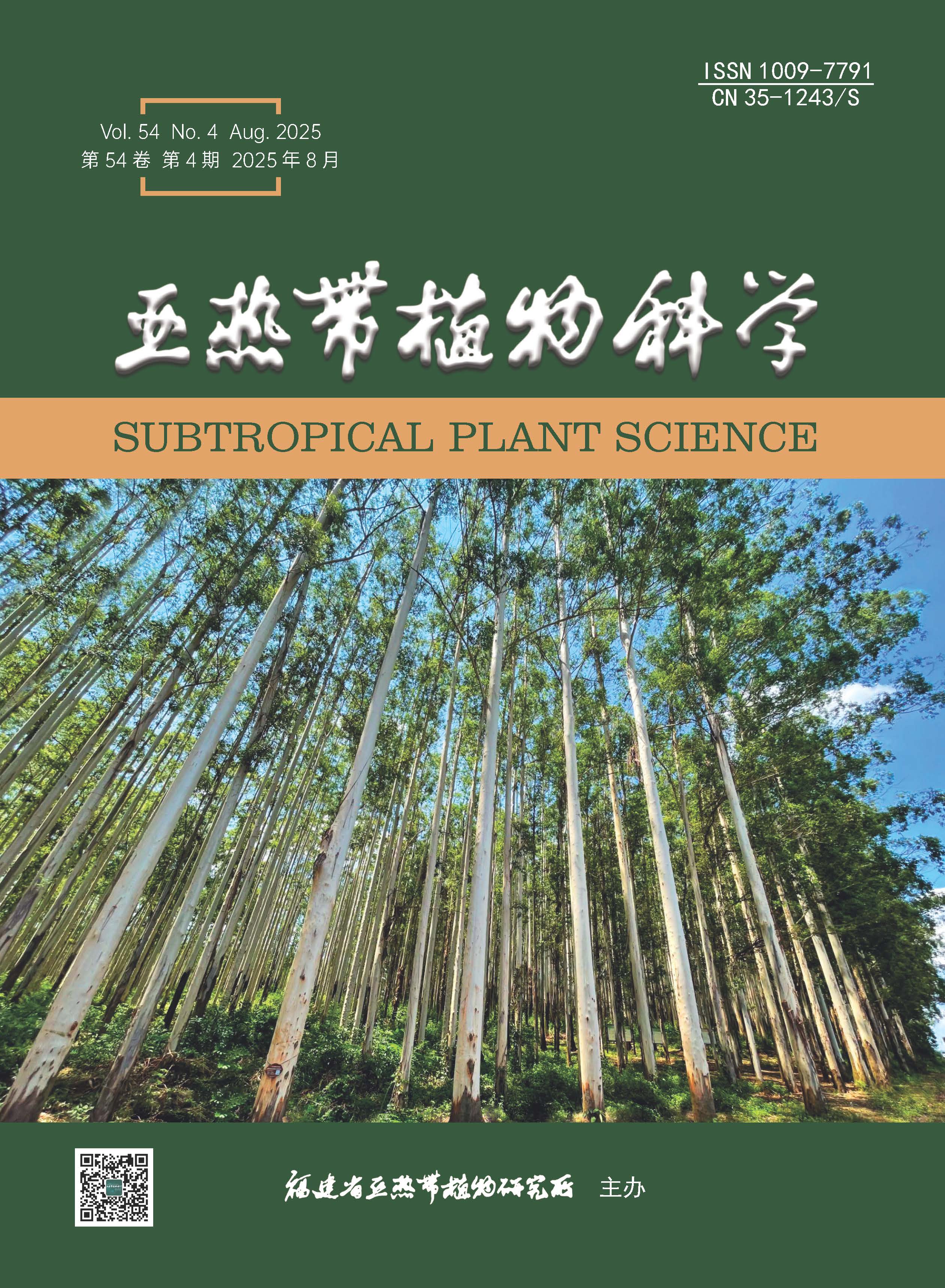|
|
Genome-wide Identification and Analysis of the HDAC Gene Family in Eucalyptus grandis
LING Teng-hong, HUANG Zhi-qing, XIE Jin-cong, WU Ai-min
2025, 54(4):
365-377.
DOI: 10.3969/j.issn.1009-7791.2025.04.001
The histone deacetylase (HDAC) gene encodes a class of proteins associated with histone deacetylation and is related to growth, development, and stress response. In this study, we conducted a genome-wide identification and bioinformatics analysis of the Eucalyptus grandis HDAC family members and analyzed the expression patterns of the EgHDAC family in the young leaves, mature leaves, stems, roots, flowers, xylem, phloem, and cambium based on transcriptome data. The results showed that the EgHDAC family could be divided into the RPD3/HDA1, HD2, and SIR2 subfamilies, comprising a total of 15 members, all of which are hydrophilic proteins. Subcellular localization prediction mainly located these proteins in the nucleus and cytoplasm. The promoter sequences of EgHDACs contained many elements responsive to light, hormones, stress, and plant growth. The E. grandis HDAC family genes EgHDT1 and EgHDA2/4/7/8/11 were highly expressed in the young leaves, mature leaves, stems, roots, flowers, xylem, phloem, and cambium tissues, while EgHDA5 was highly expressed only in the leaves. Under treatments with jasmonic acid, salicylic acid, and salt stress, EgHDT1, EgHDA4, and EgHDA5 exhibited varying degrees of expression changes. During the course of evolution, EgHDACs have both conservation and specificity, and they are likely involved in the growth and development of E. grandis, as well as responding to jasmonic acid treatment, salicylic acid treatment, and salt stress, thereby demonstrating the ability to adapt to and regulate the environment.
References |
Related Articles |
Metrics
|



